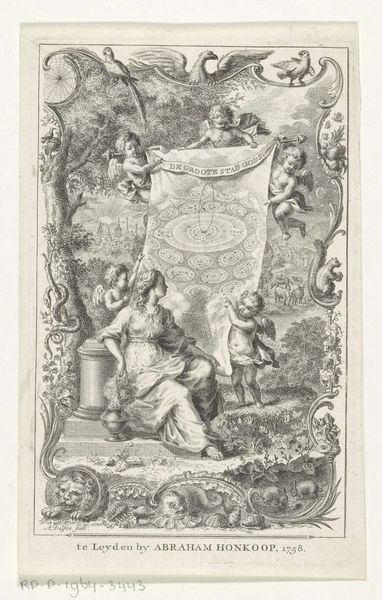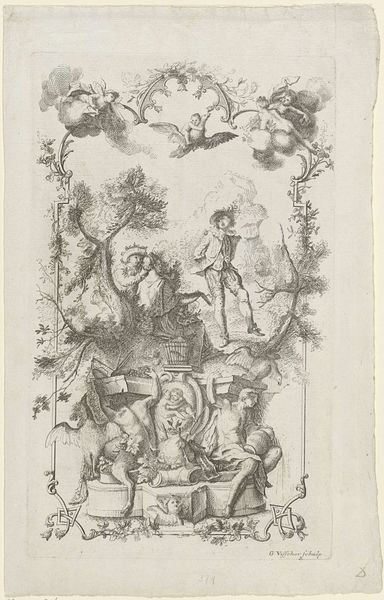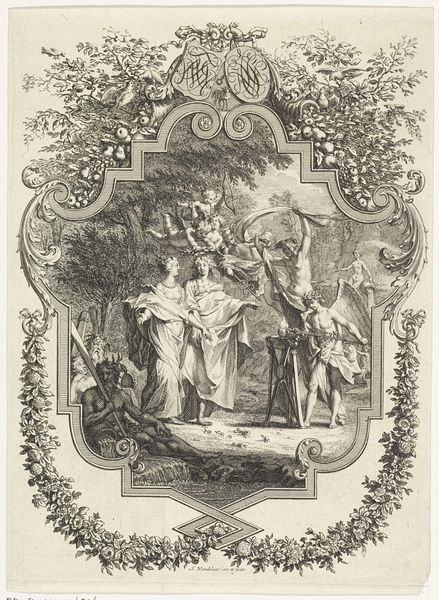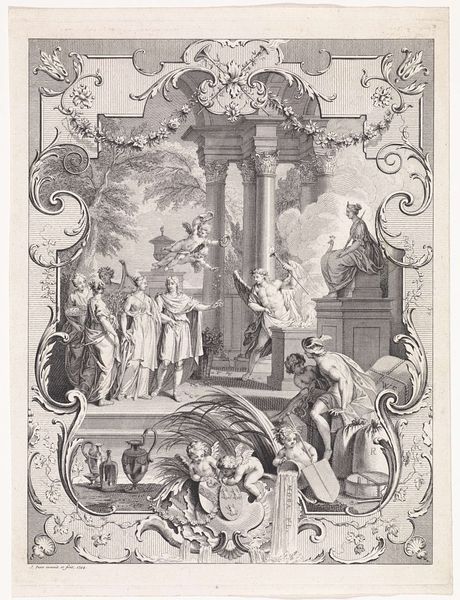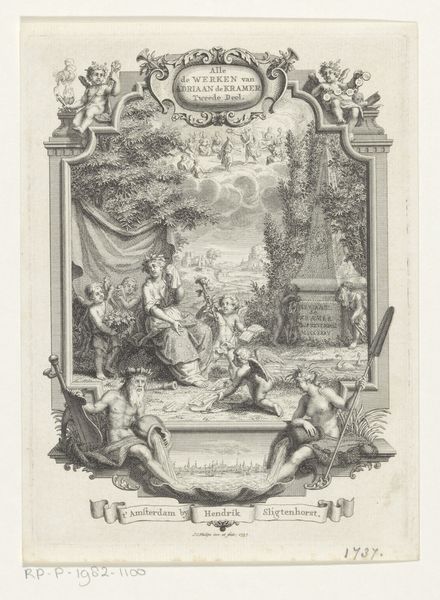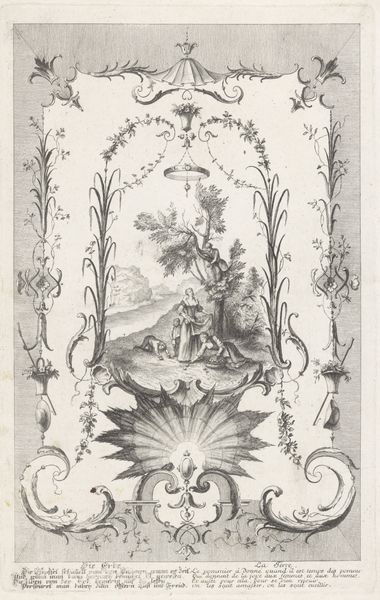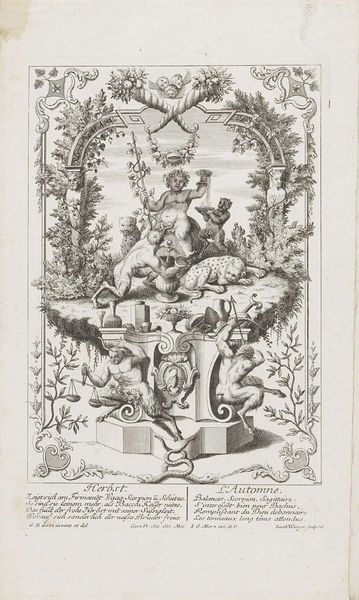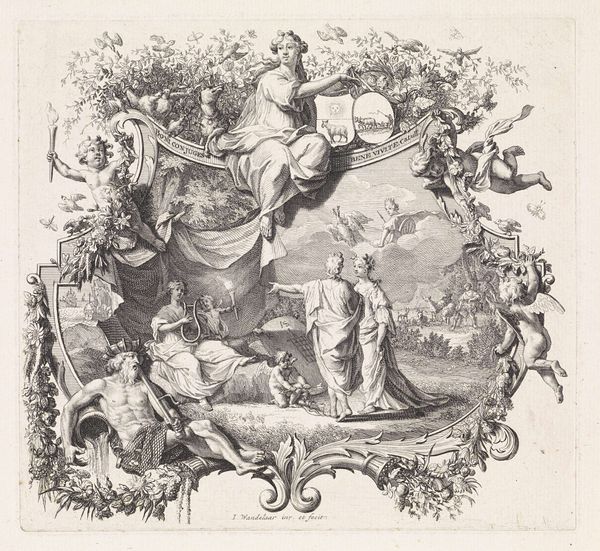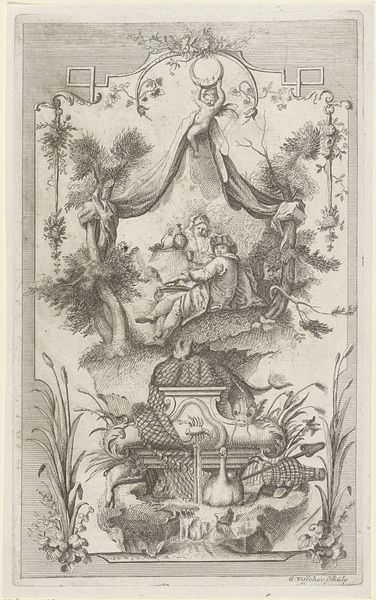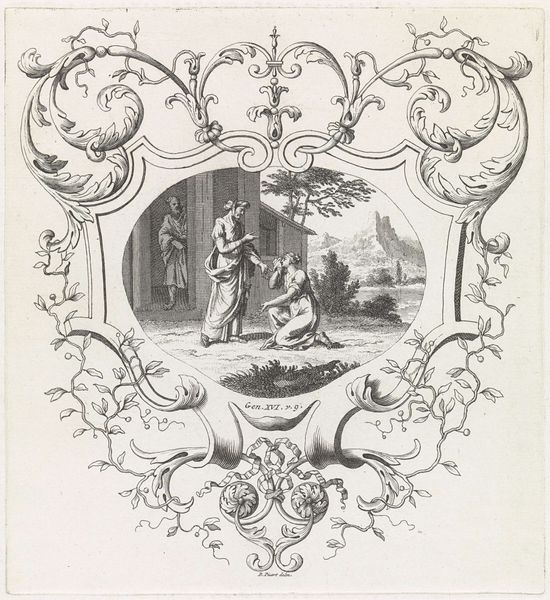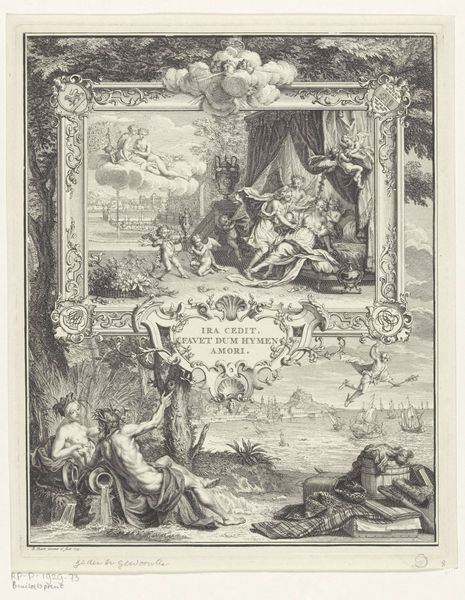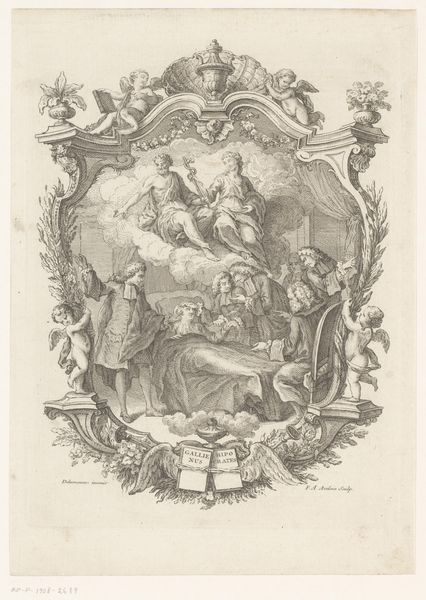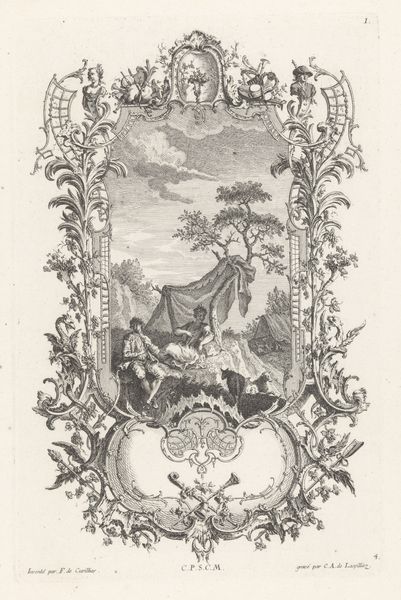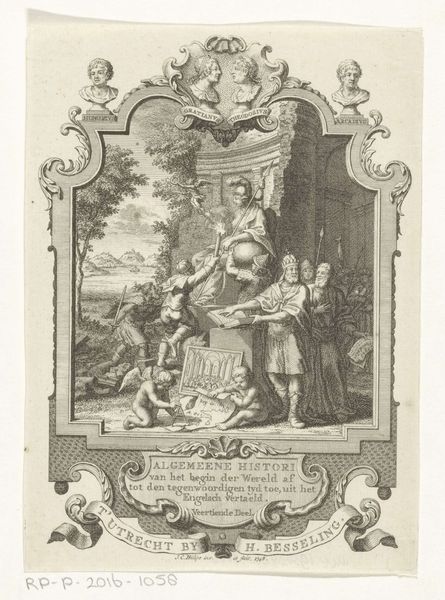
drawing, paper, ink, engraving
#
drawing
#
allegory
#
baroque
#
pen drawing
#
pen illustration
#
pen sketch
#
old engraving style
#
landscape
#
figuration
#
paper
#
ink
#
history-painting
#
engraving
Dimensions: height 185 mm, width 117 mm
Copyright: Rijks Museum: Open Domain
Abraham Delfos made this small engraving, Allegory on the Heavenly Jerusalem, sometime in the 18th century. This artwork is an excellent example of the etching process. To create this print, Delfos would have started with a metal plate, likely copper. Using a sharp needle, he scratched lines directly into the metal. This is a very different approach from engraving, where you carve out the design with a tool called a burin. In etching, the lines are created through acid. The plate is covered with a waxy, acid-resistant coating. The artist scratches through this coating, exposing the metal underneath. The plate is then immersed in acid, which eats away at the exposed lines, creating grooves. The longer the plate sits in the acid, the deeper the lines become, which ultimately dictates the darkness of the printed line. Finally, the plate is inked, the surface wiped clean, and then run through a printing press. The pressure forces the paper into the inked grooves, transferring the image. This process allowed Delfos to achieve fine detail, which was crucial for conveying the allegory of the print. It speaks to the labor and skill involved in printmaking, often overlooked in favor of painting or sculpture.
Comments
No comments
Be the first to comment and join the conversation on the ultimate creative platform.
